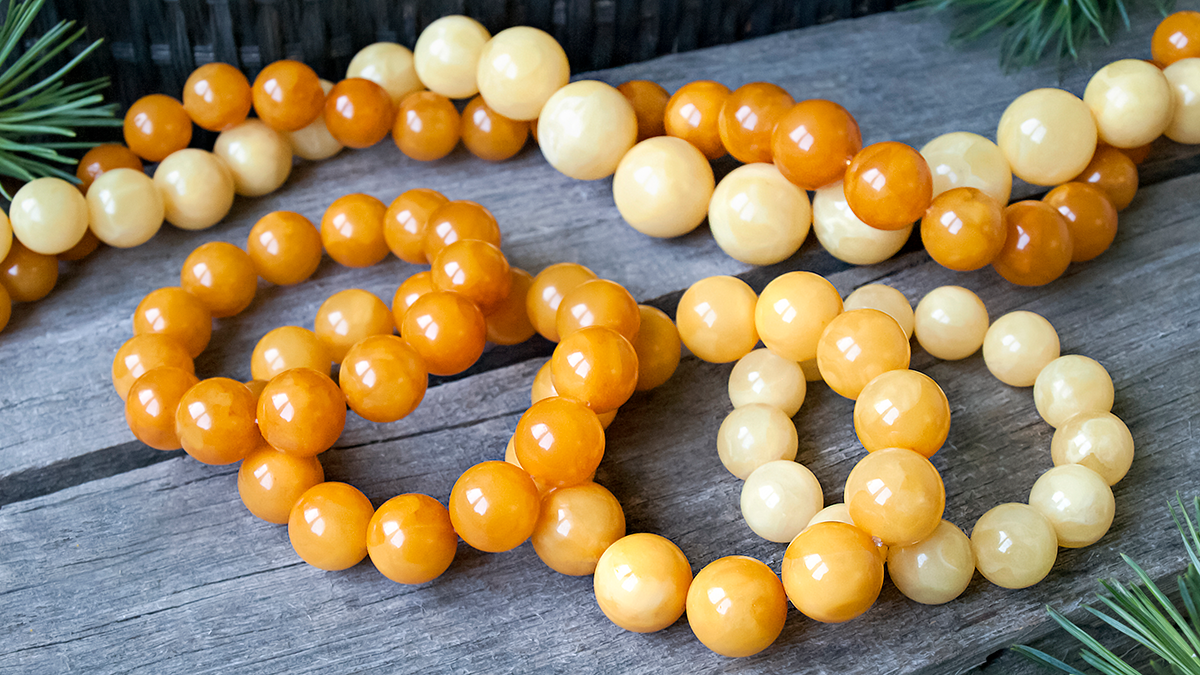
The Beauty of Amber and Copal: Exploring the Differences Between Two Unique Gems
-
When it comes to beautiful, natural gemstones, few are as captivating as amber and copal. These two organic substances, both fossilized tree resins, have been cherished for centuries due to their warm hues, mystical properties, and connection to ancient times. While amber and copal may look similar at first glance, they have distinct differences in age, formation, and value.
In this article, we'll delve into the key distinctions between amber and copal, exploring their origins, properties, and uses. Whether you're a jewelry enthusiast or a gemstone collector, understanding the unique qualities of these gems can help you make informed decisions when choosing between them. To discover more in-depth insights, visit the full blog post on AmberHats.
What is Amber?
Amber is a fossilized tree resin that has formed over millions of years. It is renowned for its striking golden, yellow, orange, and reddish tones, although it can also be found in shades of white, green, blue, and black. Often considered a gemstone, amber is highly prized in jewelry, especially in regions like the Baltic where it has been collected and traded for centuries.
The beauty of amber lies in its rich history and connection to ancient civilizations. For thousands of years, amber has been used for decorative purposes, healing, and even spiritual rituals. Fossilized plant material, insects, or small creatures trapped inside the amber add an extra layer of intrigue, making each piece truly unique.

What is Copal?
Copal is also a tree resin, but it is much younger than amber, usually ranging from a few hundred to a few thousand years old. It hasn't undergone the full fossilization process that amber has, and for this reason, copal is considered a precursor to amber. It shares similar aesthetic qualities, including a warm, translucent appearance, but its softer, less durable nature distinguishes it from amber.
Despite its relative youth, copal has its own historical significance, especially in Central and South America. Ancient civilizations like the Mayans and Aztecs used copal in rituals, burning it as incense to honor their gods. Today, copal is valued for its beauty and versatility, often used in both jewelry and traditional practices.
Key Differences Between Amber and Copal
Though they may seem similar, amber and copal differ in several fundamental ways:
-
Age:
- Amber: Formed over millions of years, amber is a fossilized resin that has undergone significant geological processes.
- Copal: Younger in age, copal has not yet fossilized and is usually only a few hundred or thousand years old.
-
Durability:
- Amber: Amber is more durable due to its advanced fossilization, making it ideal for use in fine jewelry. It has a hardness of 2 to 2.5 on the Mohs scale.
- Copal: Copal is softer and more prone to scratches and damage. It is less durable than amber, with a hardness of about 1 to 1.5 on the Mohs scale.
-
Formation Process:
- Amber: Amber has undergone a longer and more complex fossilization process, often containing ancient inclusions like insects or plant material.
- Copal: Since copal hasn't fully fossilized, it doesn't usually contain the same types of inclusions, and it retains a fresher, more resinous texture.
-
Appearance:
- Amber: Amber can exhibit a range of colors, from the classic golden and yellow tones to rarer colors like green and blue. It often has a smooth, polished finish.
- Copal: Copal is typically lighter in color, ranging from light yellow to a more transparent amber tone, and it has a more resinous feel.
-
Value:
- Amber: Due to its age, durability, and historical significance, amber is considered more valuable than copal. Pieces containing inclusions can be especially prized.
- Copal: Copal is generally less expensive, making it a more affordable option for those looking for a similar aesthetic to amber without the higher price tag.
How to Identify Amber vs. Copal
Identifying whether a gemstone is amber or copal can be tricky, especially for the untrained eye. However, there are a few tests and indicators that can help distinguish between the two:
-
Solubility Test: One of the easiest ways to differentiate amber from copal is through a simple solubility test. Copal will dissolve or become sticky when exposed to acetone or alcohol, while amber remains unaffected.
-
Hardness: Amber is harder than copal and can withstand more wear and tear. Scratching the surface lightly can reveal the relative softness of copal compared to amber.
-
Inclusions: Amber often contains well-preserved inclusions like insects, leaves, or other ancient organic matter. While copal may have inclusions, they tend to be less well-preserved and less intricate.
-
UV Light Test: When exposed to UV light, amber typically glows a pale blue or green, while copal may emit a weaker or different glow. This test is often used by gemologists to distinguish between the two.
-
Fragrance: When rubbed or gently heated, amber emits a distinct pine-like fragrance. Copal, on the other hand, gives off a more resinous, fresher scent.

Uses of Amber and Copal
Both amber and copal have been used for centuries in various ways:
-
Jewelry: Amber is highly prized for its beauty and durability, making it a popular choice for necklaces, rings, bracelets, and earrings. Copal is also used in jewelry but is more commonly seen in casual or costume pieces due to its lower durability.
-
Healing and Spiritual Practices: Amber is believed to have healing properties, often worn as a talisman to promote health, good fortune, and protection. Copal, particularly in Central and South America, has been burned in spiritual rituals as incense.
-
Collectibles: Amber, especially pieces with rare or well-preserved inclusions, is collected as a natural artifact. Copal, while less valuable, is still appreciated for its natural beauty and historical significance.
While both amber and copal are beautiful and captivating in their own right, understanding their differences can help you make the best choice when purchasing or collecting these precious stones. Amber, with its long history, durability, and higher value, is perfect for those seeking a gemstone that will stand the test of time. Copal, on the other hand, is a more affordable option for those who want a similar aesthetic at a lower price point.
-
